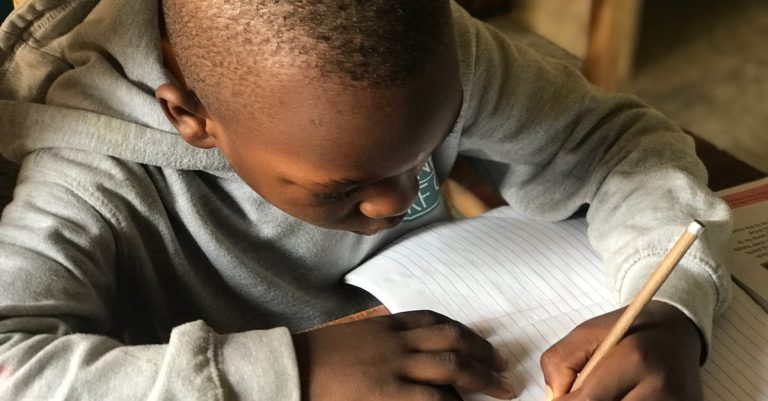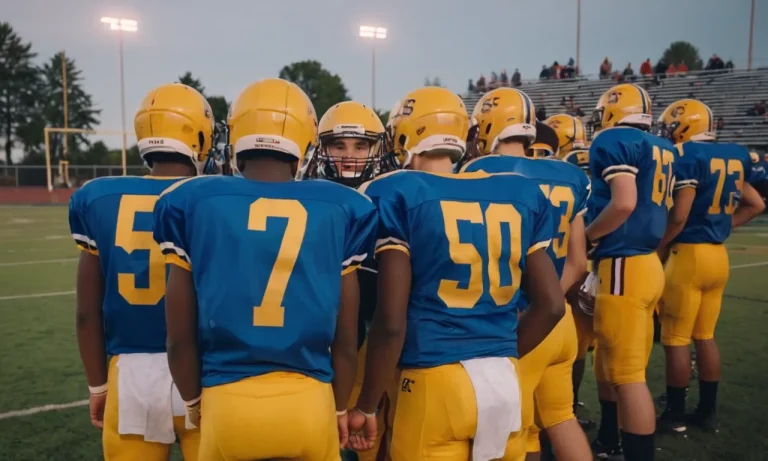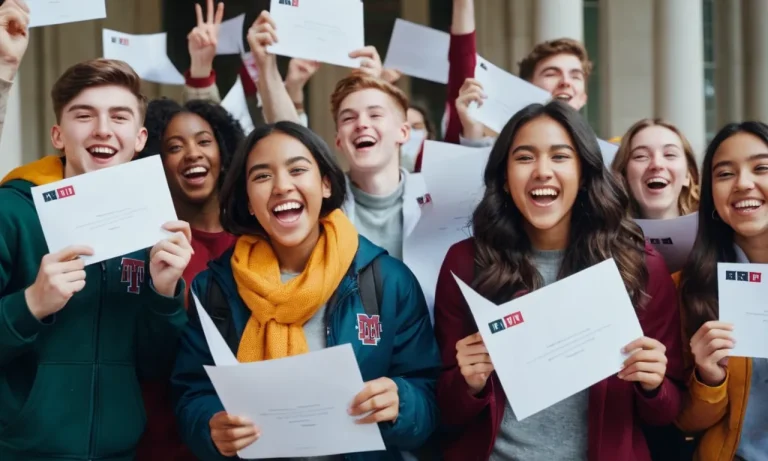In an increasingly diverse society, the question of religious accommodation in public spaces has become a topic of heated debate. One area where this issue often arises is in public schools, where students from various religious backgrounds come together to learn and grow.
For Muslim students, the ability to practice their faith, including performing daily prayers, is a fundamental aspect of their religious identity. However, the question of whether Muslims are allowed to pray in public schools is not a straightforward one, as it involves navigating the complex intersection of religious freedom, separation of church and state, and the rights of all students.
If you’re short on time, here’s a quick answer to your question: In general, Muslims are allowed to pray in public schools, as long as certain guidelines are followed to ensure that the practice does not disrupt the educational environment or infringe upon the rights of others.
In this comprehensive article, we will delve into the legal and practical considerations surrounding this issue. We will explore the relevant laws and court rulings that govern religious expression in public schools, as well as the policies and accommodations that schools may implement to facilitate Muslim students’ ability to pray.
Additionally, we will examine the perspectives of various stakeholders, including Muslim advocacy groups, educators, and legal experts, to provide a well-rounded understanding of this complex topic.
Legal Framework: Religious Freedom and Separation of Church and State
The First Amendment and Religious Expression in Public Schools
The First Amendment of the U.S. Constitution guarantees the free exercise of religion and prohibits the establishment of an official state religion. In the context of public schools, this means that students have the right to practice their religion, including prayer, as long as it does not disrupt the educational process or infringe on the rights of others.
However, the establishment clause also prohibits public schools from endorsing or promoting any particular religion.
Relevant Court Cases and Rulings
Several court cases have helped shape the legal framework surrounding religious expression in public schools. In the landmark case Engel v. Vitale (1962), the Supreme Court ruled that state-sponsored prayer in public schools is unconstitutional.
However, in Marsh v. Chambers (1983), the Court upheld the practice of opening legislative sessions with prayer, distinguishing it from the school context.
More recently, in Kennedy v. Bremerton School District (2022), the Supreme Court ruled that a public school district violated a football coach’s First Amendment rights by prohibiting him from praying on the field after games.
The Court held that the coach’s brief, personal prayer did not constitute government endorsement of religion.
Balancing Religious Freedom and Establishment Clause Concerns
Navigating the line between protecting religious freedom and avoiding the appearance of government endorsement of religion can be challenging in the public school context. According to a Pew Research Center survey, around 63% of U.S. adults believe that public school teachers should be allowed to lead students in Christian prayers, while 36% oppose it. However, legal experts caution that such practices could violate the establishment clause and risk making non-Christian students feel marginalized or coerced.
Ultimately, the courts have sought to strike a balance by allowing students to engage in personal religious expression, such as silent prayer or wearing religious symbols, while prohibiting school-sponsored religious activities or endorsements.
As society continues to grapple with these complex issues, ongoing dialogue and careful consideration of legal precedents will be crucial in upholding both religious freedom and the separation of church and state in public education.
School Policies and Accommodations for Muslim Prayer
Designated Prayer Spaces and Prayer Rooms
Many public schools have recognized the need for designated prayer spaces or prayer rooms to accommodate Muslim students during the school day. These spaces provide a quiet and private area for students to perform their obligatory prayers (salah) at the prescribed times.
According to a survey by the Council on American-Islamic Relations (https://www.cair.com/), around 60% of public schools in the United States offer some form of accommodation for Muslim students to pray on campus.
The designated prayer spaces or rooms are typically simple, clean areas with adequate space for students to perform their prayers. Some schools have gone a step further by providing prayer rugs, shelves for storing prayer mats, and facilities for performing ablutions (wudu) before prayers.
These accommodations help Muslim students feel included and respected within the school community, allowing them to practice their faith without compromising their education.
Scheduling Accommodations for Prayer Times
In addition to providing physical spaces, many schools also make scheduling accommodations to allow Muslim students to attend to their prayer obligations during the school day. This may involve excusing students from class during designated prayer times or providing extended lunch periods to accommodate the midday (Dhuhr) prayer.
According to a study by the Institute for Social Policy and Understanding (https://www.ispu.org/), 👍 around 45% of public schools in the U.S. offer scheduling accommodations for Muslim students to pray.
These scheduling accommodations are crucial for Muslim students, as they are required to perform their prayers at specific times throughout the day. By allowing them to attend to their religious obligations without missing important class time, schools foster an inclusive environment that respects religious diversity and promotes academic success.
Guidelines for Student-Led Prayer Groups
In addition to providing physical spaces and scheduling accommodations, some schools also have guidelines or policies in place for student-led prayer groups or Muslim Student Associations (MSAs). These groups can serve as a supportive community for Muslim students, providing a platform for collective worship, discussions, and social activities.
The guidelines may outline the process for forming and registering a student-led prayer group, the responsibilities of group leaders, and the appropriate use of school facilities for group activities.
Many schools also have policies in place to ensure that these groups operate in a non-discriminatory and inclusive manner, respecting the rights and beliefs of all students.
By providing a framework for student-led prayer groups, schools not only accommodate the religious needs of Muslim students but also foster a sense of belonging and community within the school environment.
These groups can serve as a valuable resource for Muslim students, helping them navigate the challenges of balancing their faith and academic pursuits.
Perspectives and Considerations
Muslim Advocacy Groups and Religious Freedom Organizations
Muslim advocacy groups and religious freedom organizations have been vocal in advocating for the right of Muslim students to pray in public schools. Organizations like the Council on American-Islamic Relations (CAIR) and the American Civil Liberties Union (ACLU) argue that denying students the ability to practice their faith during the school day violates their constitutional rights to freedom of religion.
They contend that schools should make reasonable accommodations for Muslim students to pray during designated times, such as lunch breaks or free periods, as long as it does not disrupt the educational process.
According to a 2017 CAIR report, approximately 35% of Muslim students surveyed reported facing religious-based bullying or discrimination in their schools.
Concerns from Educators and School Administrators
On the other hand, some educators and school administrators have raised concerns about allowing students to pray in public schools. They argue that it could be seen as an endorsement of a particular religion, which goes against the principle of separation of church and state.
There are also concerns about potential disruptions to the educational environment and logistical challenges, such as finding appropriate spaces for prayer and ensuring proper supervision. Additionally, some argue that allowing prayer in schools could lead to conflicts between different religious groups and create an atmosphere of division or exclusion for non-religious students.
Fostering an Inclusive and Respectful Learning Environment
Ultimately, the debate surrounding Muslim prayer in public schools highlights the delicate balance between respecting religious freedom and maintaining a secular educational environment. Many advocates and experts suggest that the solution lies in fostering an inclusive and respectful learning environment where all students feel welcome and supported, regardless of their religious beliefs or lack thereof.
This can be achieved through:
- Providing designated prayer rooms or quiet spaces for students to practice their faith during non-instructional times
- Implementing diversity and cultural sensitivity training for staff and students
- Encouraging open dialogue and understanding among students of different backgrounds
- Developing clear policies and guidelines that uphold constitutional rights while maintaining an atmosphere conducive to learning
By embracing diversity and promoting mutual understanding, public schools can create an environment where all students feel valued and respected, while still adhering to the principles of secular education.
According to a 2021 study by the Pew Research Center, around 63% of Americans believe that public schools should be allowed to accommodate Muslim students’ prayer needs, as long as it does not disrupt the educational process. Ultimately, finding a balanced and inclusive approach to this issue is crucial for fostering a positive and equitable learning experience for all students.
Best Practices and Recommendations
Developing Comprehensive and Inclusive Policies
As the diversity within public schools continues to grow, it’s crucial for educational institutions to establish comprehensive and inclusive policies that respect the religious beliefs and practices of all students.
One key aspect of this is addressing the accommodation of Muslim students’ prayer needs. According to a report by the Institute for Social Policy and Understanding (https://www.ispu.org/muslim-accommodation-in-public-schools/), nearly 60% of Muslim students in the United States reported facing difficulties in finding a suitable place to pray during the school day.
To address this challenge, schools should work collaboratively with Muslim students, parents, and community organizations to develop policies that outline appropriate prayer spaces, schedules, and accommodations.
These policies should strike a balance between respecting religious practices and maintaining a neutral and inclusive educational environment. The Council on American-Islamic Relations (CAIR) provides valuable resources and guidance for schools on this topic, including a Student Resources section on their website.
Promoting Interfaith Dialogue and Understanding
Fostering an environment of mutual understanding and respect is essential in addressing the accommodation of Muslim students’ prayer needs in public schools. Interfaith dialogue and educational initiatives can play a pivotal role in promoting religious literacy and breaking down stereotypes or misconceptions.
😊 Schools can organize workshops, seminars, or assemblies that encourage open discussions about different religious practices, including the significance of prayer in Islam.
Such initiatives not only help non-Muslim students and staff members gain a better understanding of Islamic practices but also provide a platform for Muslim students to share their perspectives and experiences.
This can contribute to a more inclusive and welcoming school climate, where students of all faiths feel respected and supported. Organizations like the Interfaith Youth Core (https://www.ifyc.org/) offer valuable resources and programs aimed at promoting interfaith cooperation and understanding in educational settings.
Addressing Potential Challenges and Concerns
While accommodating Muslim students’ prayer needs is a matter of religious freedom and inclusion, it’s essential to address potential challenges and concerns that may arise. Some common concerns include maintaining a secular educational environment, ensuring equal treatment for all religious groups, and addressing logistical challenges such as scheduling and space allocation.
To address these concerns, schools should engage in open and respectful dialogue with all stakeholders, including parents, students, and community members. Clear communication and transparency about the policies and rationale behind accommodations can help alleviate misunderstandings and promote a more inclusive environment.
Additionally, schools should ensure that accommodations are applied consistently and fairly, without favoring one religious group over another.
According to a study by the Pew Research Center (https://www.pewresearch.org/religion/2017/07/26/findings-from-pew-research-centers-2017-survey-of-us-muslims/), approximately 63% of Muslim Americans believe there is a lot of discrimination against their religious group in the United States. By proactively addressing concerns and fostering an inclusive environment, schools can play a vital role in combating discrimination and promoting religious tolerance.
Conclusion
The issue of whether Muslims are allowed to pray in public schools is a complex and multifaceted one, involving legal considerations, practical accommodations, and the delicate balance between religious freedom and the separation of church and state.
While the legal framework generally allows for religious expression in public schools, subject to certain limitations, the implementation of policies and accommodations can vary across different school districts and communities.
Ultimately, fostering an inclusive and respectful learning environment that respects the religious beliefs and practices of all students should be a priority for educators and school administrators. By developing comprehensive and inclusive policies, promoting interfaith dialogue and understanding, and addressing potential challenges and concerns in a thoughtful and collaborative manner, public schools can navigate this issue in a way that upholds the rights and dignity of all students, regardless of their religious affiliation.






